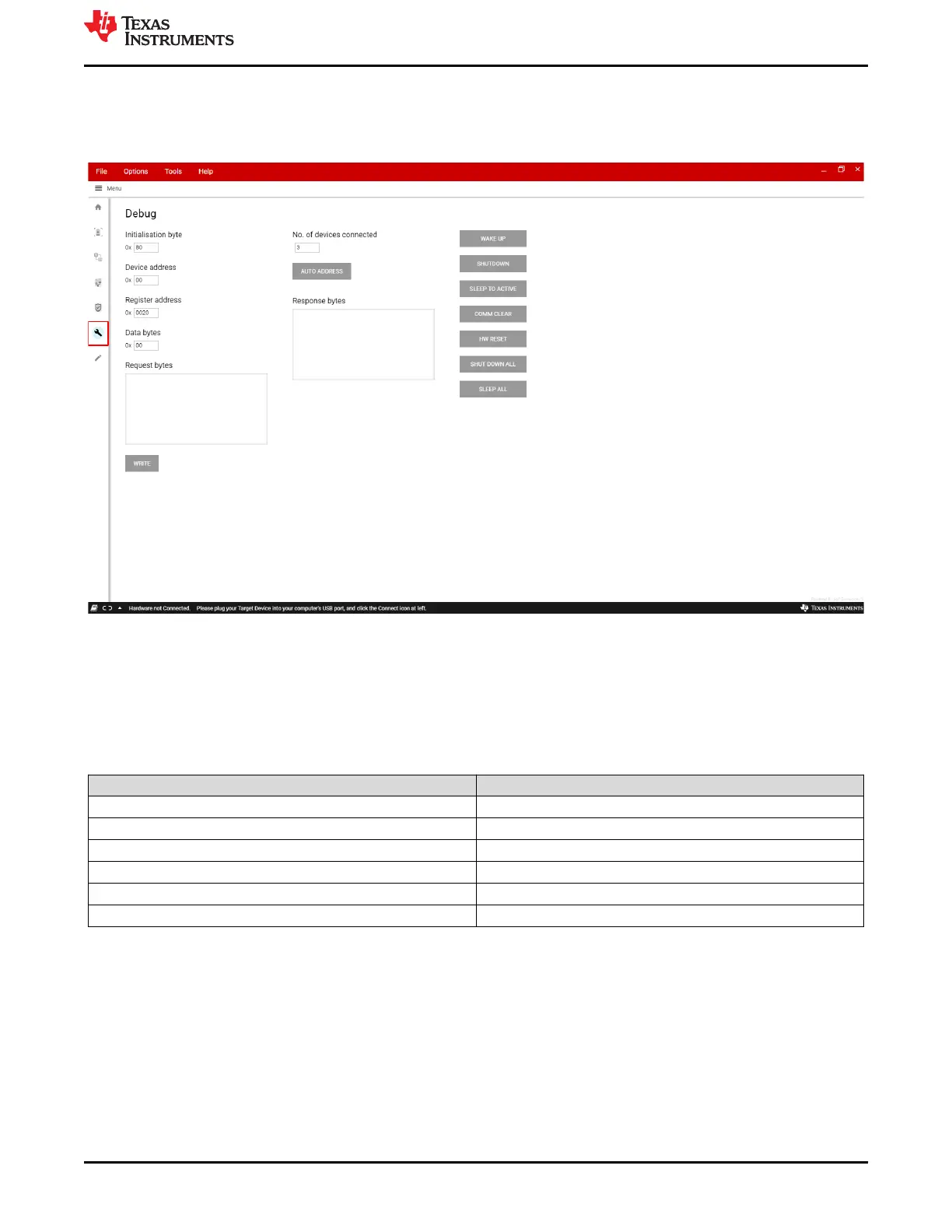11 Debug
From this page, the user can directly perform register reads and writes to the connected devices. This provides
some extended functionality that is not present on the GUI front end.
Figure 11-1. BQ79616 GUI Debug Page
11.1 Write and Read
The first step in communicating with the device is to use the initialization byte that corresponds to the intended
communication type. A summary of the different initialization bytes available to the user can be found in the table
below.
Table 11-1. Initialization Bytes
Communication Type Initialization Byte
(1)
Single Device Read 0x80
Single Device Write 0x9*
Stack Read 0xA0
Stack Write 0xB*
Broadcast Read 0xC0
Broadcast Write 0xD*
(1) For write operations, replace asterisks with the number of bytes to be written minus one up to a maximum of 8 bytes written
simultaneously.
Second, the user specifies the device to be communicated to via the Device Address field. This field is only
available for single device communication, as the stack and broadcast communication modes communicate to
multiple devices. Third, the user specifies the Register Address to be written to. Last, the user fills out the Data
Bytes field. For a read, the data bytes should be the number of bytes to be read minus one. For a write, the data
bytes are the bytes to be written.
For both reads and writes, the user should then press the Write button. For read commands, a write button
press also performs a read from the device, and the response is populated in the response bytes window.
www.ti.com
Debug
SLUUC36 – DECEMBER 2020
Submit Document Feedback
BQ79616-Q1 and BQ75614-Q1 GUI User's Guide 27
Copyright © 2020 Texas Instruments Incorporated

